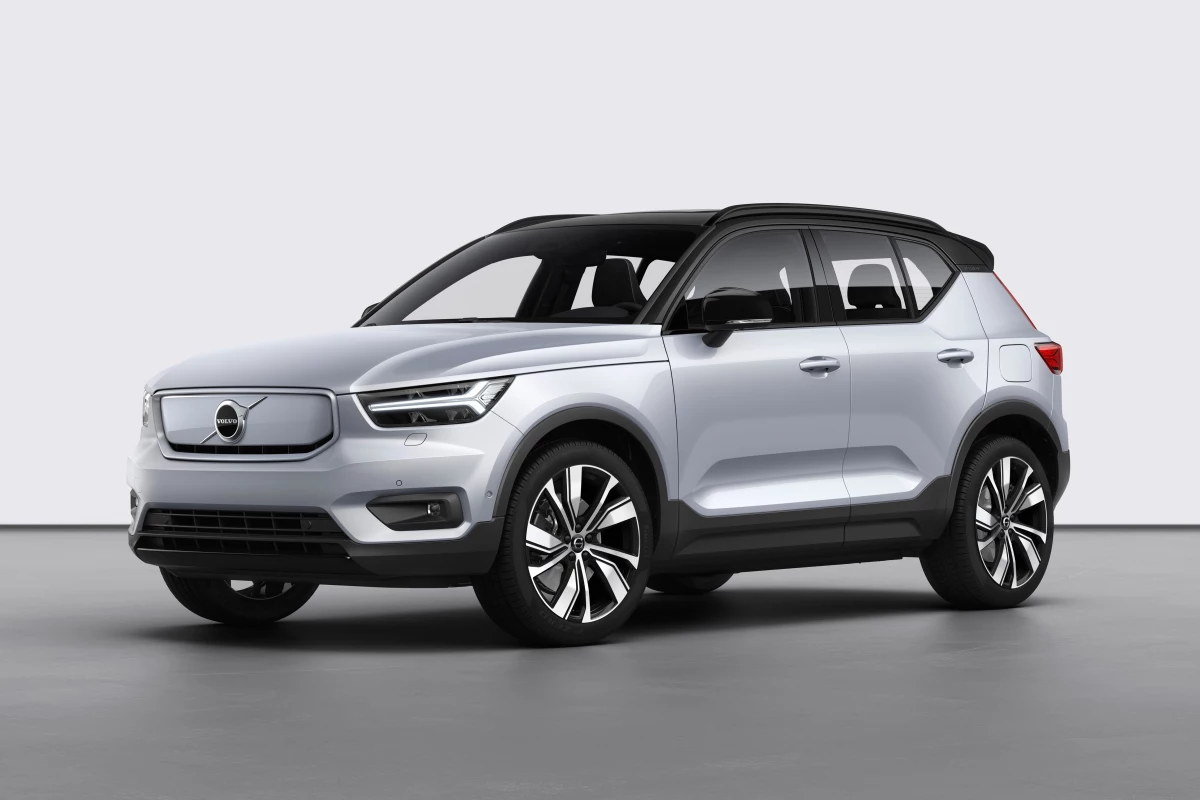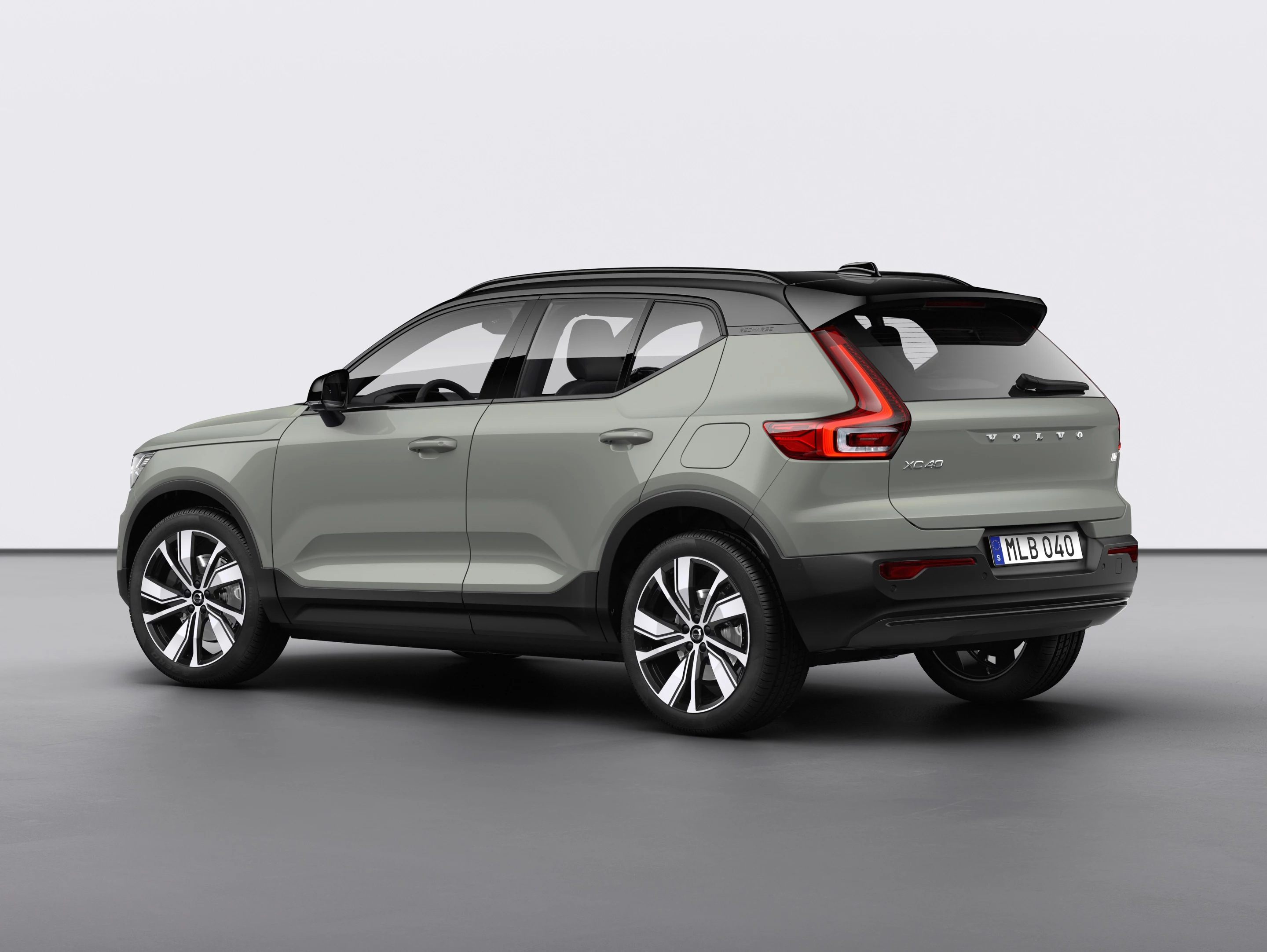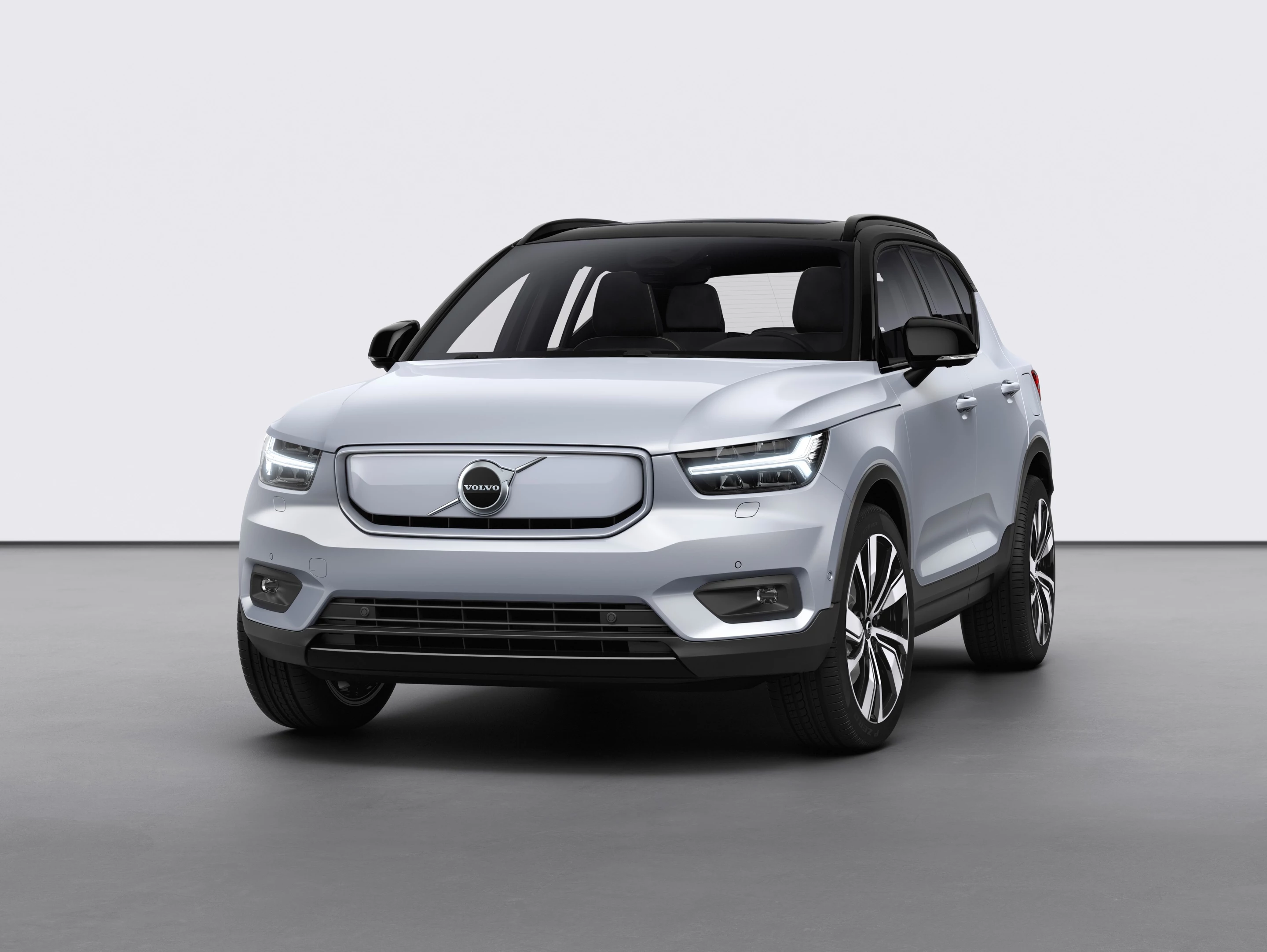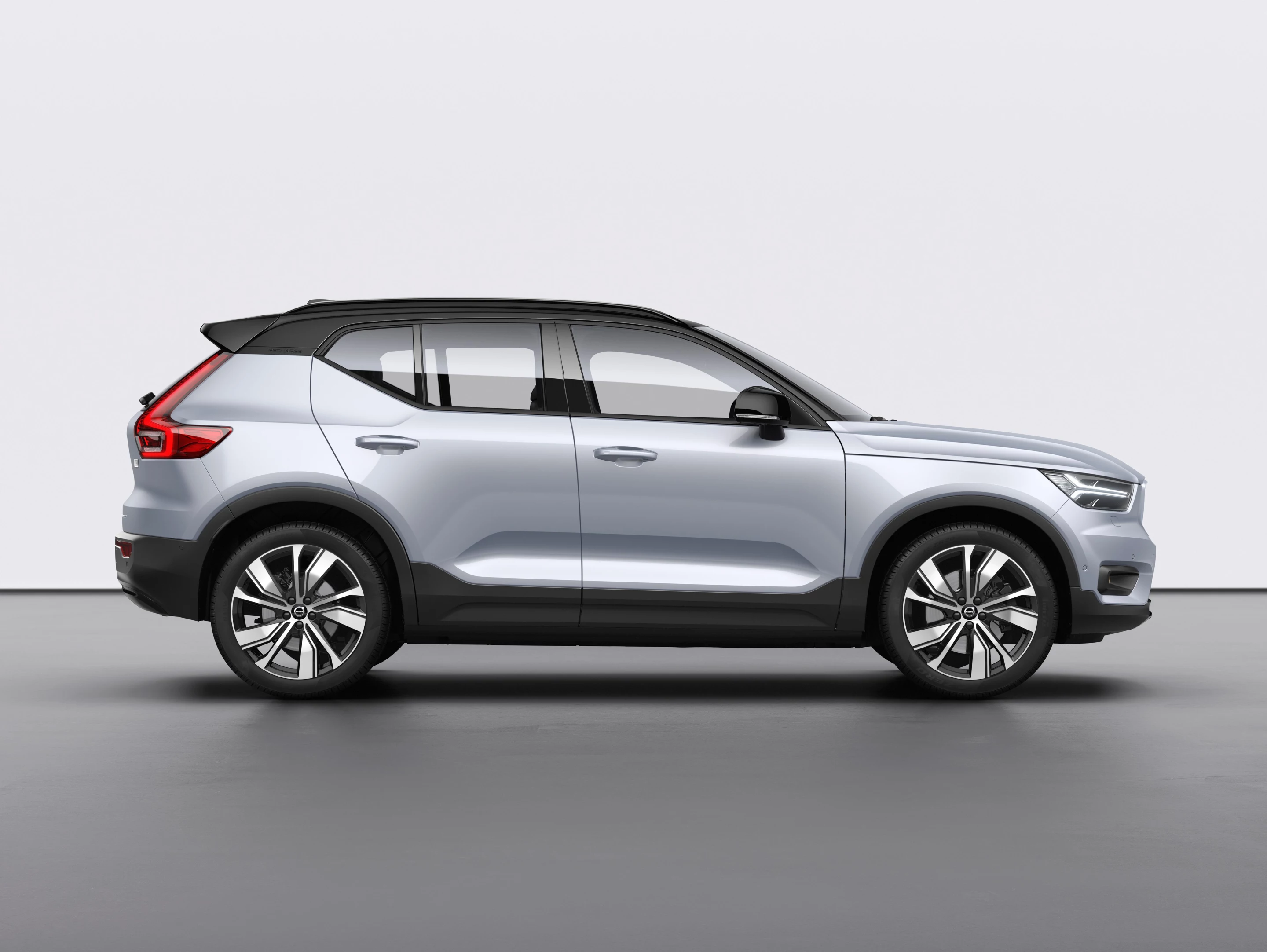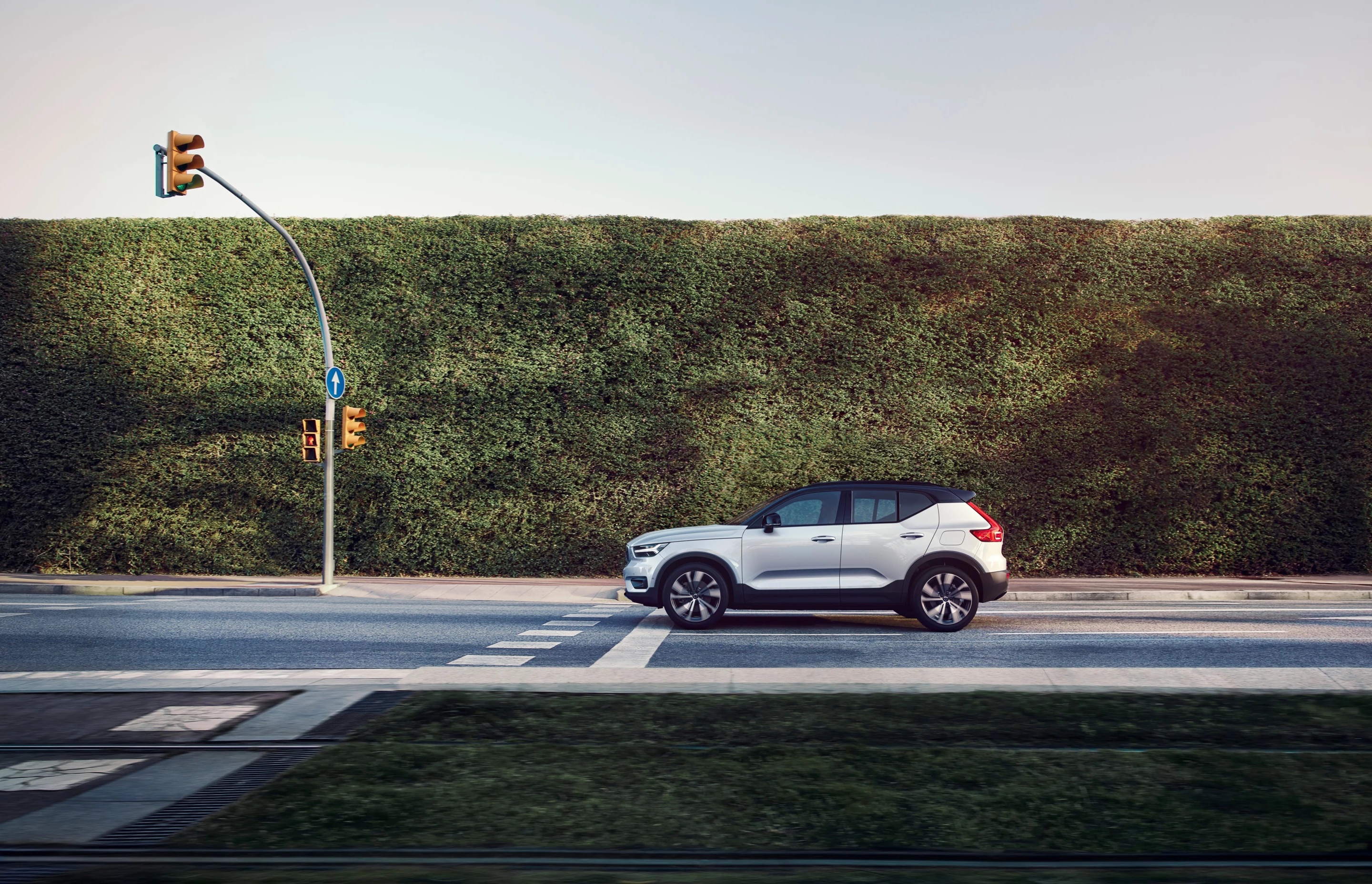Volvo has introduced its first fully electric vehicle, the XC40 Recharge. The 402-hp crossover marks the debut of a greater Recharge lineup of battery electrics and plug-in hybrids and an era in which every customer will have to decide if they want their Volvo with a plug or without. Volvo intends for electrified models to represent 100 percent of global sales by 2025, something it'll help along by offering free electricity with every Recharge plug-in hybrid.
The XC40 Recharge packs a dual-motor all-wheel-drive with 402 hp, more than doubling the output of the 187-hp gas XC40 T4 models and offering a healthy boost over the 248-hp all-wheel-drive gas T5s. The Recharge can wander for up to 249 miles (400 km, WLTP) on a charge, after which the owner can expect to spend about 40 minutes fast-charging the 78-kWh battery to 80 percent. The e-crossover has an estimated 4.7-second 0-60 mph (96.5 km/h).

Volvo gives its electric XC40 a revised look to match its new power source, dropping the now-unnecessary grille in favor of a body-color panel wearing the Volvo badge proudly. Immediately behind the new face is a handy front trunk.
"[The XC40's] bold, instantly recognizable design is now even sleeker and more modern in the all-electric version," explained Volvo Cars design chief Robin Page in teasing the car earlier this month. "Without the need for a grille, we have created an even cleaner and more modern face, while the lack of tailpipes does the same at the rear."
The redesigned front fascia also houses the sensor set for the Advanced Driver Assistance Systems, a new Zenuity software-controlled suite that makes its debut on the Recharge. The system uses radar, cameras and ultrasonic sensors in supporting automated driving features, and its scalable nature means it can be grown and enhanced over time.

The XC40 Recharge is still a Volvo, which means safety is paramount. An embedded extruded aluminum safety cage surrounds the floor-integrated battery to create a protective crumple zone, while the car's front and rear body structures are reinforced to distribute collision forces away from cabin occupants.
Inside, Volvo promises the all-new Android-based infotainment system offers drivers and passengers a more intuitive interface, a higher level of personalization and new Google services. Volvo says it's the first automaker to team with Google on such an in-vehicle Android system, and features will include built-in Google Maps, Google Assistant with voice control, and Google Play store. The system will also work with ADAS, supplying mapping details and information like speed limits. Over-the-air updates will keep it fresh.
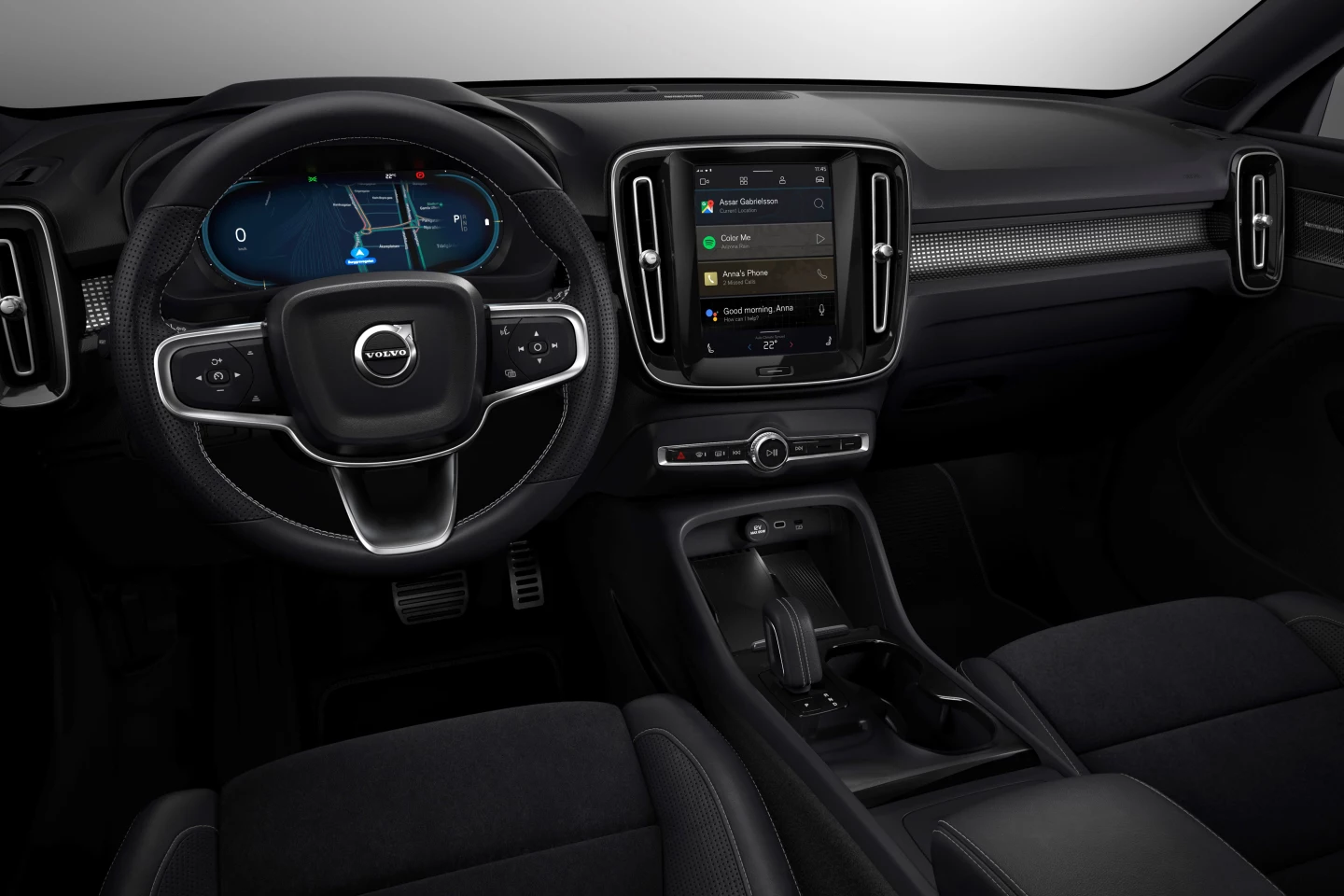
The XC40 introduces the "Recharge" name, but it's already a family, as it will apply to both new and existing plug-in hybrids, as well as forthcoming battery electric vehicles. The new branding is part of Volvo's ambitious plan to become fully climate neutral by 2040, starting immediately by working to make Recharge models more than 20 percent of 2020 global sales. It will introduce a new all-electric vehicle every year for the next five years, electrifying its entire lineup by 2025, with global sales split half all-electric, half hybrid. Volvo will prod adoption along by increasing promotional efforts around electric powertrain tech, starting by offering a year of free electricity with every Recharge plug-in hybrid model.
In addition to slashing tailpipe emissions with an energized focus on plug-in powertrains, Volvo's near-term plans include cutting 25 percent of emissions related to its global supply chain, increasing the use of recycled plastics, and reducing 25 percent of emissions related to overall operations like manufacturing and logistics.

Volvo's debut press pack is fairly short and sweet for a car of this significance, so we'll surely be reporting back on additional details as they're released, particularly in answering the ever-important questions of pricing and availability.
Source: Volvo
